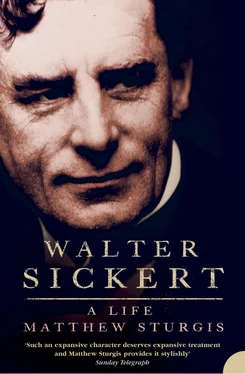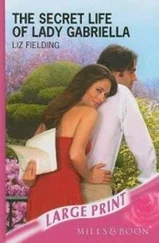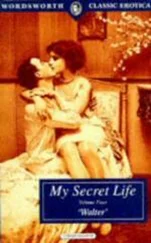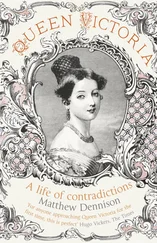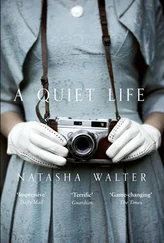At the beginning of March he reported excitedly that he was hoping for ‘something’ at the theatre. To prepare himself he went every night ‘to observe’. 5 He also took up fencing lessons to improve his posture and fit himself for the swash and buckle of the high Victorian repertoire. 6 Through a family friend he was introduced to Irving and put into contact with the person responsible for hiring the company’s ‘supers’ – the non-speaking extras needed for crowd scenes, stage battles, and general ‘business’. 7 The Lyceum employed dozens, if not hundreds, of them. Most were mere drudges, ‘small wage earners’ adding to their income by taking on an evening job. But there was a select band of enthusiasts, known in the theatre as ‘Lyceum young men’ – ambitious trainees starting out on their theatrical careers. Sickert joined their ranks. The ‘Lyceum young men’ enjoyed certain small privileges. If any part required some modicum of intelligence or flair – or perhaps even included a line – it was given to one to them. They even had their own green room. 8 It is not known in which production Sickert first ‘walked on’; but by the end of the month he was able to get tickets for Alfred Pollard and his sisters to attend the first night of Edward Bulwer-Lytton’s The Lady of Lyons . 9 For Sickert, at the age of nineteen, to be on stage with Irving and Terry was to savour the full glamour of the theatrical world. 10
Despite his lowly status he was acknowledged by Irving and treated with kindly consideration. 11 He also came to know Ellen Terry. She lived in Longridge Road, close to the Sickerts’ Kensington home, and sent her two children to the same advanced primary school attended by young Oswald and Leonard. 12 Walter developed a crush on her which she graciously indulged. In one letter to Pollard he boasted that he had spent an evening in her company, remarking complacently that friends had begun to suspect that there was some ‘MissTerry’ about his movements. 13 On another occasion, after he had taken Helena to a musical soirée at a friend’s house, he made an impromptu call at Longridge Road on the way home, much to his sister’s delight and alarm. 14
It was perhaps through Ellen Terry that Walter was introduced to E. W. Godwin. Despite their separation, he and Ellen had remained on close terms: he continued to design costumes for her, and to offer advice upon her acting. * Godwin called at Pembroke Gardens early in the year, and soon afterwards invited Walter to dine with him and his young wife – the painter Beatrice Birnie Philip – at their elegantly underfurnished home in Taviton Street, Bloomsbury, where the white and strawcoloured drawing room was dominated by a life-size cast of the Venus de Milo. 15 Although he continued to carry out occasional architectural commissions, Godwin had become increasingly absorbed in his stage work, designing, with a devoted regard for the details of historical accuracy, sets, costumes, and properties. (When asked to make designs for Wilson Barrett’s production of Hamlet , his first step had been to visit Elsinore.) He had many theatrical friends and connections, and was potentially a very useful contact for an aspiring young actor.
For Walter, however, he had an additional attraction. He was a close friend of Whistler. Sickert’s commitment to a career on the stage had done nothing to diminish his passionate interest in the American painter. At the Grosvenor Gallery show that spring, the picture that impressed him most was Whistler’s Golden Girl . 16 Godwin could tell him more about his hero. He, after all, had designed Whistler’s home, the elegant and austere White House in Tite Street, Chelsea, along with much of its furniture. The two men had collaborated on projects: they had created an exhibition stand together for the Paris Exposition Universelle the previous year. They shared a common passion for Japanese art and blue-and-white china. They were both members of the St Stephen’s Club and saw much of each other there.
If Sickert’s connection with Godwin brought him closer to Whistler’s world, it did not quite bring him into Whistler’s presence. It was Ellen Terry who, according to legend, was responsible for first drawing Sickert to his hero’s attention. It happened one evening at the Lyceum when Walter was not on duty. Wishing to throw a bunch of violets to Ellen at the curtain call, and anxious that it should carry over the footlights, he weighted his bouquet with lead shot. He rather overestimated the amount needed, and the flowers, after spinning through the air, dropped to the stage with a very audible clunk right next to the greatly surprised Henry Irving. Whistler, who was in the house that night, noted this miniature drama with amusement and took the trouble to discover its perpetrator. 17
The two men met soon afterward. From the beginning of May the Forbes-Robertsons hosted a soirée each Friday at their house in Charlotte Street. 18 They were exciting and crowded occasions: Mr Forbes-Robertson had a wide connection, and his offspring were numerous, talented, successful, charming, and gregarious. At their parties the worlds of art, letters, and the stage met and the generations mingled. Walter could encounter young actresses and old lions. 19 Oscar Wilde, just down from Oxford and embarked upon a career of self-advertisement and poetical affectation, was a regular guest. So was Whistler. It was almost certainly in the crowded studio at Charlotte Street that Sickert was first introduced to his hero. 20 The meeting, however, though momentous, was brief, and it was only on the following day, when Sickert by chance saw Whistler entering a tobacconist’s shop and followed him in, that he asked if he might call at his studio. 21
Whistler, though he consented, barely had a studio in which to receive his young admirer. Overwhelmed by legal bills after his pyrrhic victory in the Ruskin trial, he had been declared bankrupt at the beginning of May. 22 His collections of oriental china and Japanese prints had been sold off at auction along with many of his own works. The bailiffs were in possession of the White House, and bills were already posted announcing its imminent sale. Dispirited but not crushed by these setbacks, Whistler continued to live on in the denuded house, and to keep up a front of spirited defiance. A semblance of the old life continued. It was said that he pressed the bemused bailiffs into service at his Sunday breakfast parties. He found both the time and the heart to show Sickert over his studio. Although much had been sold, and not a little destroyed (to prevent it falling into the hands of his creditors), there was still plenty to admire.
Sickert wrote enthusiastically to Pollard: ‘I went to see Whistler the other day. He showed me some glorious work of his and it was of course a great pleasure to me to talk with him about painting. Such a man! The only painter alive who has first immense genius, then conscientious persistent work striving after his ideal[,] he knowing exactly what he is about and turned aside by no indifference or ridicule.’ 23 The account betrayed a depth of engagement that went beyond Sickert’s more conventional excitement at the deeds of Irving and Terry.
The tension between his theatrical ambitions and his artistic interests was quickened that summer. In August, when most of the London theatres closed, Walter accompanied the rest of the family to Dieppe. They had rented the Maison Bellevue, Miss Slee’s old school house on the heights of Neuville, for the holidays. The school had finally closed, but Miss Slee herself was still in residence. She was not the only addition to the Sickert party that summer. Various other friends came to stay, and Oscar Wilde accepted an invitation from Mrs Sickert to spend some time with them. Walter was initially suspicious of Wilde, considering him something of a poseur; but he was willing to suspend his verdict because, as he explained to Pollard, ‘firstly E[llen] T[erry] likes him and 2 ndlyhe likes me’. 24 Extended exposure encouraged him in this revised opinion. Wilde, beneath the deliberate extravagances of his manner, had real charm. Besides winning over the sceptical Walter, he was a source of delight to the rest of the family. His laughter was ceaseless and contagious. He played happily with Oswald and Leo, and made a special bond with Helena, then a bright but rather bolshy 15-year-old. He would discuss poetry with her, despite her determination to go to Cambridge – the Scientific University. When he caught her frowning doubtfully at the improbable tales he invented for Oswald and Leo’s amusement, he would appeal to her in a tone of mock anguish, ‘You don’t believe me, Miss Nelly. I assure you … well, it’s as good as true.’ 25
Читать дальше
